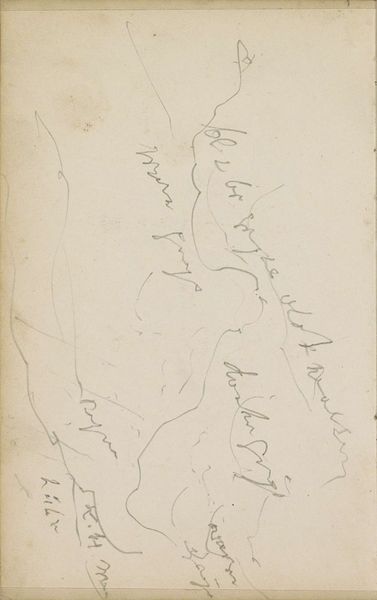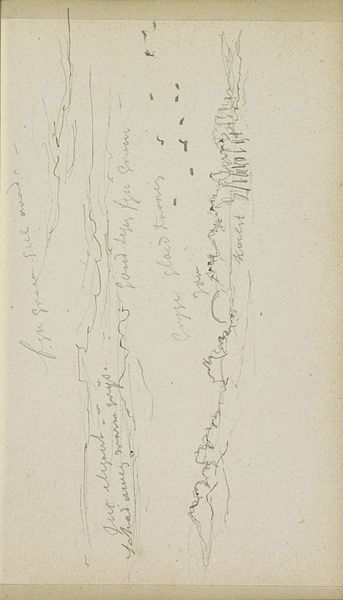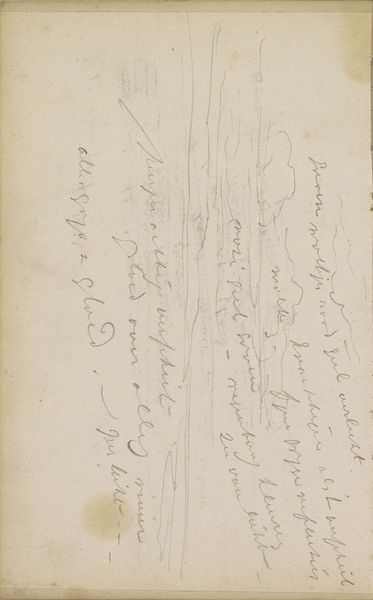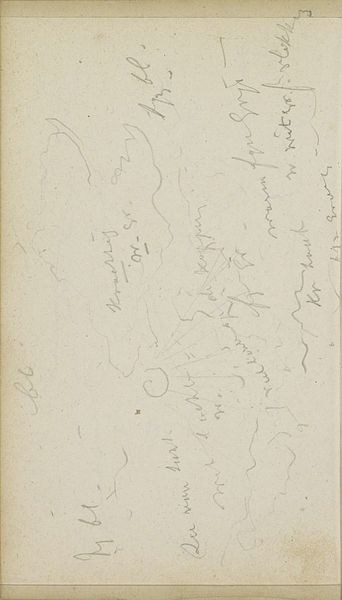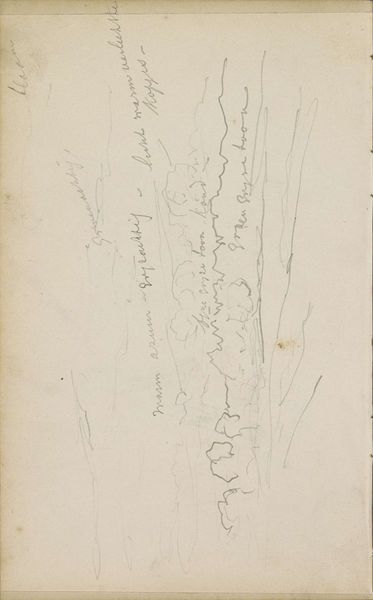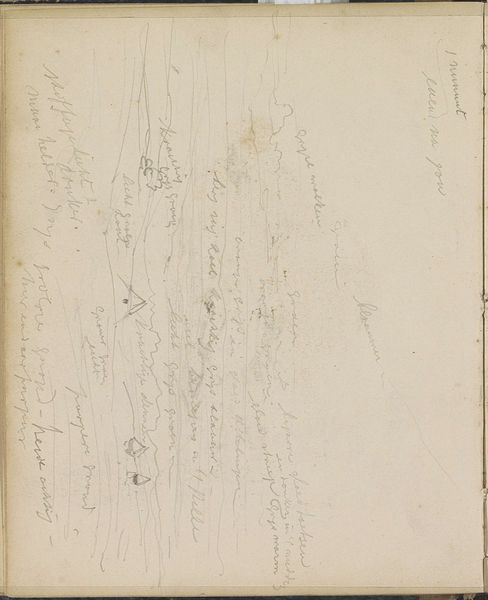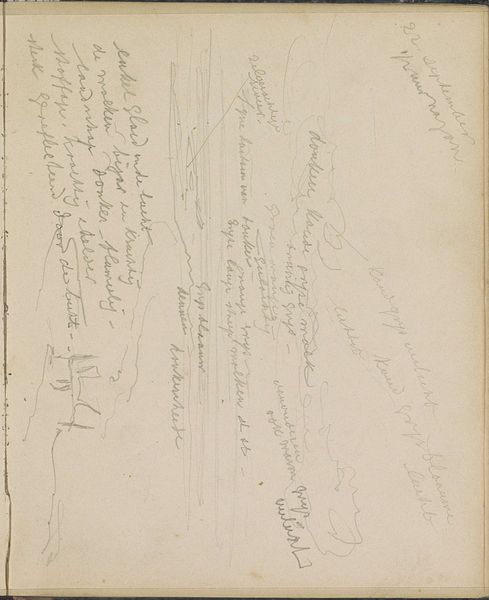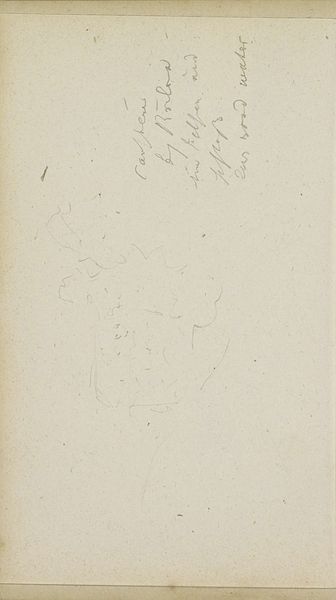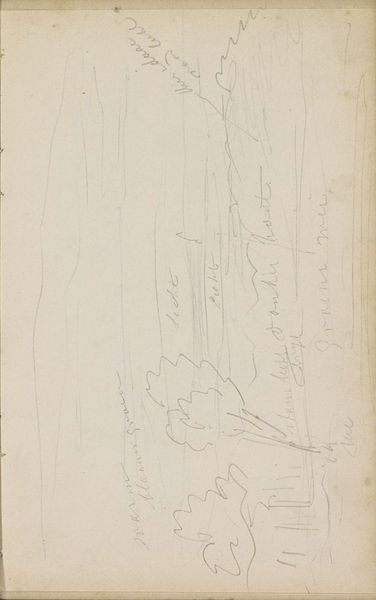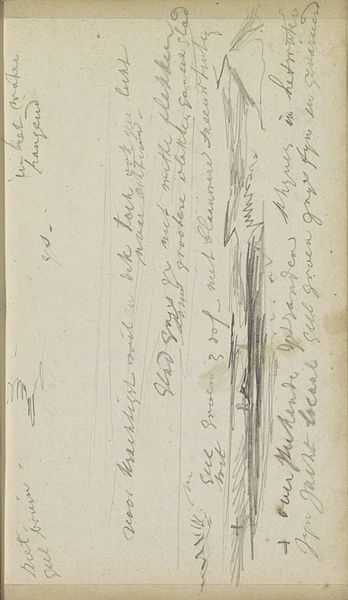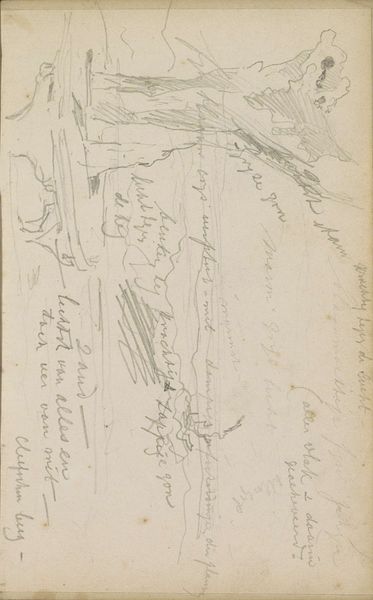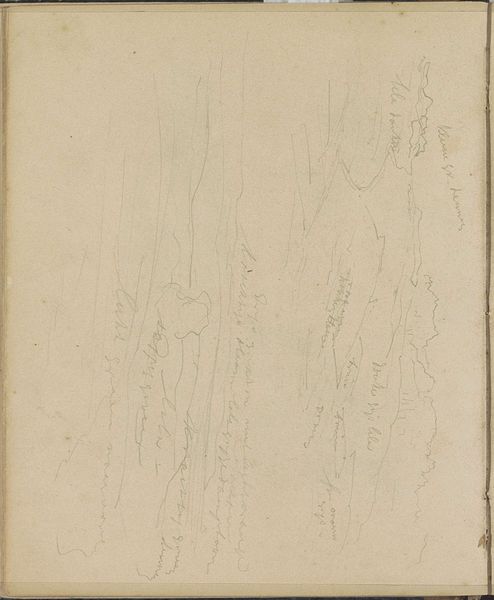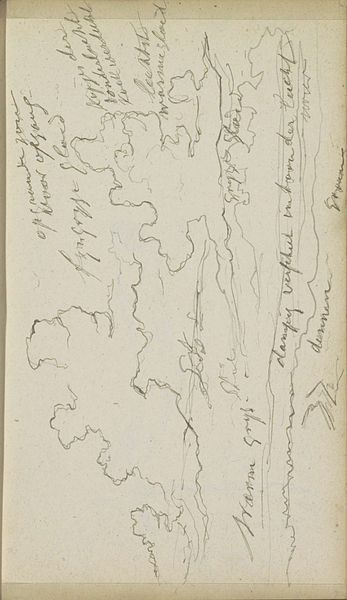
Copyright: Rijks Museum: Open Domain
Curator: Here we have Johannes Tavenraat's "Heuvellandschap," dating from between 1839 and 1872. It’s a landscape sketch rendered in pencil on paper. Editor: It feels almost spectral, like a fading memory of a place rather than a concrete depiction. So delicate! Curator: It certainly possesses a Romantic sensibility, emphasizing feeling and evocation over strict representation. Think about the period. The rising middle class had more time for leisure and hobbies. This work on paper can give us a perspective into these rising aspirations through their access to artmaking itself. Editor: Landscape imagery was significant. Mountains often served as symbols of transcendence and the sublime. Is there a cultural context that shaped Tavenraat’s specific approach to this landscape? Curator: Consider that the Low Countries were grappling with defining their national identity, and romanticized depictions of their landscape contributed to a sense of collective pride and belonging. I wonder if there are symbols embedded in those pencil lines? Is it an inventory, or a message about nationhood. Editor: The drawing feels preliminary, a fleeting impression captured with economical lines. The written notations interspersed throughout – were those a common addition at the time, in a work such as this one? Do they add specific context to locations or meaning to the overall symbolic imagery? Curator: Artists' sketches of that time, weren’t always meant to be displayed. They acted as preparations for larger works or private explorations. As for the annotations, landscape notations of time offer a glimpse into the artistic process. As they connect what’s recorded, written down, to what actually made it into the art piece later on. They ground us in the period, and give insight into these new approaches, particularly during times of great cultural and societal change, such as that period between 1839-1872, in the Netherlands. Editor: Thinking about it this way provides context into how even seemingly innocuous works like these landscapes were still wrapped up in broader historical narratives. It adds to how art works like this one, can challenge cultural norms about access and how identity itself becomes attached to certain geographical spaces. Curator: I'll certainly view pencil sketches in a new way now. Thank you. Editor: Agreed. Now when I look at landscapes from this period, I can view beyond pretty vistas into how ideas get formed and reshaped, and find new meanings about symbolism in something even as raw as these visual ideas that can have real-world social implications.
Comments
No comments
Be the first to comment and join the conversation on the ultimate creative platform.
